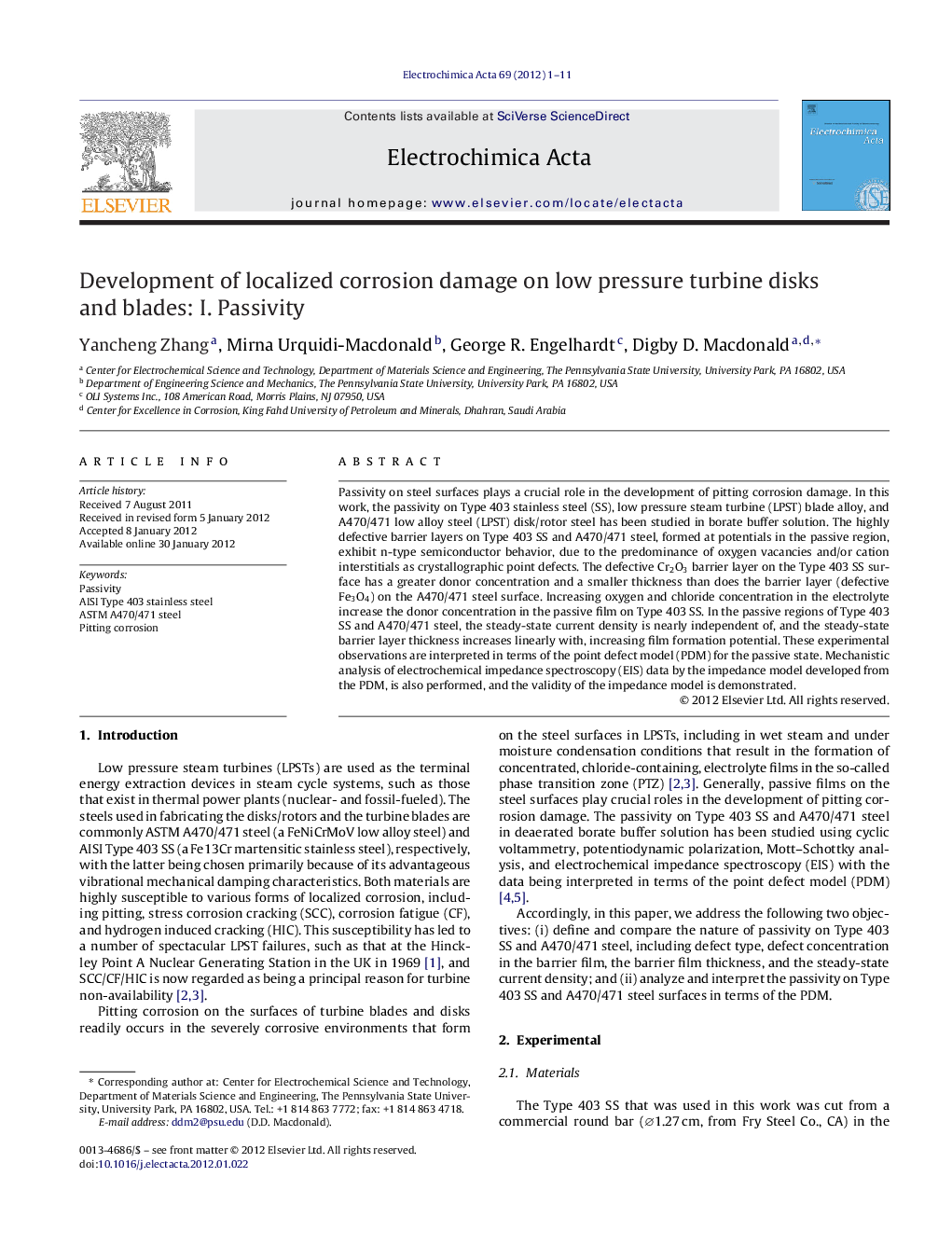| Article ID | Journal | Published Year | Pages | File Type |
|---|---|---|---|---|
| 188718 | Electrochimica Acta | 2012 | 11 Pages |
Passivity on steel surfaces plays a crucial role in the development of pitting corrosion damage. In this work, the passivity on Type 403 stainless steel (SS), low pressure steam turbine (LPST) blade alloy, and A470/471 low alloy steel (LPST) disk/rotor steel has been studied in borate buffer solution. The highly defective barrier layers on Type 403 SS and A470/471 steel, formed at potentials in the passive region, exhibit n-type semiconductor behavior, due to the predominance of oxygen vacancies and/or cation interstitials as crystallographic point defects. The defective Cr2O3 barrier layer on the Type 403 SS surface has a greater donor concentration and a smaller thickness than does the barrier layer (defective Fe3O4) on the A470/471 steel surface. Increasing oxygen and chloride concentration in the electrolyte increase the donor concentration in the passive film on Type 403 SS. In the passive regions of Type 403 SS and A470/471 steel, the steady-state current density is nearly independent of, and the steady-state barrier layer thickness increases linearly with, increasing film formation potential. These experimental observations are interpreted in terms of the point defect model (PDM) for the passive state. Mechanistic analysis of electrochemical impedance spectroscopy (EIS) data by the impedance model developed from the PDM, is also performed, and the validity of the impedance model is demonstrated.
► This paper explores passivity on Type 403 stainless steel and ASTM A470/471 steel. ► Determined that the passive film is a n-type semiconductor. ► Optimized Point Defect Model on impedance data to determine values for model parameters.
